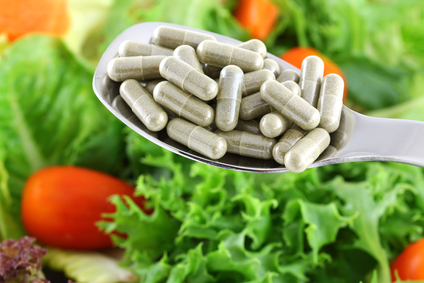Every once in a while we are looking for a quick resolution, maybe some magic pills that could solve our problem, be it extra body weight, acne, or hair loss problem. Big companies are making big money on selling those magic pills that most of the time are something that any wise customer could either get at the grocery store for lesser money or substitute it with some fresh produce. Listening, a few days ago, to an advertisement about a magic pill, Lipozene, that would “melt fat” made me curious about the mechanism of the pill. The main ingredient that you find on the label is Amorphophallus Konjac Root.
Konjac Root (Glucomannan) is a plant that is native to Asia and belongs to genus Amorphophallus. Konjac plant is highly used in Chinese foods and Chinese medicine for detoxification, tumor-suppression and other. Also, Konjac has no calories but is very high in fiber. Lipozene® is using this high fiber product to suppress appetite which may reduce your body weight, probably even without any additional ingredients if your problem is overeating. Does the science support this assumption?
Nitesh Sood et al. conducted a meta-analysis of randomized controlled trials on glucomannan products. The study was published in The American Journal of Clinical Nutrition. Fourteen studies with a total of 531 (overweight/or diabetic/ or obese) participants met the inclusion criteria for this study. The dosage range of glucomannan used in those studies ranged between 1.2-15.1 g/day (mostly 3g) that was administered for 3-16 weeks in various forms such as capsules, tablets, biscuits and so forth.
The meta-analysis showed that the administration of glucomannan significantly lowered total cholesterol, LDL, triglycerides, and body weight. Studies suggest that pediatric patients don’t have similar effects as the adult participants. Additionally, patients with impaired glucose metabolism did not receive similar triglycerides benefits as in other patients. Which may suggest it would not reduce weight in diabetics. The potential cardiovascular benefit from glucomannan is suggested to be due to the lowering LDL cholesterol and total cholesterol levels. The decrease of body weight during 16 weeks of treatment was about 5%, which described to be mild but statistically significant.
The ingredient in the study was Glucomannan, not Lipozene, or a particular diet aid. The results are consistent with studies of other fibers, such as oat fiber. And, the effects are most likely due to a fiber content. However, there may be possible other synergistic actions currently not recognized.
While high fiber can help to reduce appetite and help GI tract movements, it is important to remember about some potential side effects that high fiber can have. Some participants complained about loose stools, flatulence and diarrhea. Abdominal discomfort was also most commonly reported by the patients. Also, there is a concern about esophageal obstruction resulting from swelling of glucomannan tablets.
Glucomannan is a soluble fiber, just like any other soluble fiber (oats, guar gum, pectin) it has potential benefits to reduce risk of coronary heart disease by reducing lipids. Glucomannan prolongs gastric emptying time, which means it increases the time of satiety, which is the “magic” to weight reduction in people who struggle with increased appetite and overeating. Glucomannan is also 3 times cheaper than Lipozene, and can be purchased in powder that can be convenient for adding extra fiber to your meals, shakes and more. The important part is to remember Glucomannan is not magic, it may not help to people who has well balanced diet with plenty of fruits and vegetables in the diet. Also addition fruits, vegetables, and oats for breakfast can be a great choice to increase fiber in the diet for those who try to reduce some extra weight and also adds some vitamins and minerals naturally.







